Adding Diversity to Your Production Workforce
Adding Diversity to Your Production Workforce
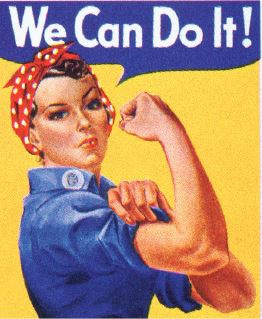
In 1942, Westinghouse Company’s War Production Coordinating Committee commissioned the “We Can Do It!” poster as one in a series designed to boost employee morale and productivity. Norman Rockwell’s depiction further popularized it after running on the cover of the Saturday Evening Post on May 29, 1943.
EDITORIAL NOTE: This article is the magazineʼs first foray into the topic of women working in the component manufacturing industry. If the observations or practices of these CMs raise questions in your mind, please reach out to us at editor@sbcmag.info, we’d love to incorporate your thoughts and observations in future issues.
From 1940-1945, the number of women in manufacturing doubled, as women joined the workforce to support the war effort. While many of these jobs were reclaimed by male soldiers after World War II ended, the image of “Rosie the Riveter” remains as an iconic symbol of women in the workforce, especially manufacturing.
The influx of women into the workforce continued after the war, driven primarily by increased education, the availability of more part-time jobs, and labor-saving technologies that made household work less time consuming. However, as the infographic suggests, women’s involvement in the manufacturing sector does not trend toward WWII-era levels.
Earlier this year, SBC Industry News ran a poll to gather information about women in production roles in component manufacturing (CM) plants. While more than 85 percent of respondents reported that they had at least one woman working in their production facility, the overall picture fell in line with current information from the Bureau of Labor Statistics depicted in the infographic, with woman comprising less than 10-15 percent of the overall production workforce in the components industry.
Truss Tech Industries, Inc.: Beyond Industry Averages
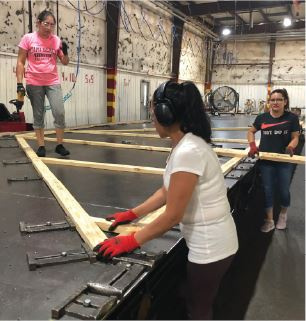
The production staff at Truss Tech Industries in Buford, Georgia, is almost 40 percent women.
There is one component manufacturer in Buford, Georgia, who boasts a female production team much larger than the industry average. Jay Asgari of Truss Tech Industries, Inc. recognized almost a decade ago that hiring more women could be a solution to the labor shortages he was facing. “To fill the production table and saw positions, we started hiring ladies and trained them,” he says. “The result was incredible. The shop was more organized, quality of products improved and a much friendlier environment appeared.” In addition, Jay says they “met and surpassed production goals with less missed workdays” and have also enjoyed better employee retention.
It all began in 2012 when Jay paired their first female new hire with a male employee to get familiar with the TCT saw, cleaning around it, then running it. “Every time she took more responsibility,” Jays says, “I increased her salary.” When she became comfortable, he says, “we purchased more TCTs and hired; she trained a friend to be her catcher.” Jays explains that once they had trained more women to run the saws, they moved them to the floor truss machine and then to the truss table. “They are very, very meticulous about what they do,” Jay says. “The output is a little less than the guys, but the quality is better, so you don’t have to redo anything. They pay a lot of attention and have a very good work ethic.”
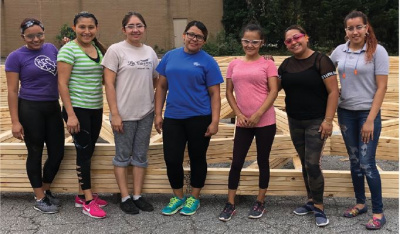
Jay remembers that there were some managers who were skeptical at the beginning as they started to grow a production team that is now 120 employees strong. “No one would think that one day 40 percent of the plant would be female,” he says, but the results clearly speak for themselves. “According to insurance inspectors and TPI 3rd party QC inspectors and everyone else who comes to our plant,” Jay says, “it is the most clean and interesting plant because there are so many women.”
Millard Lumber: Seeing Potential to Solve Shortages
In addition to better retention and fewer missed days, the overall impression of those CMs interviewed about this topic was that hiring more women in the plant results in improved quality, increased safety, and a cleaner, friendlier, more organized environment. This has been Mark Russell’s experience as employee engagement manager for Millard Lumber in Waverly, Nebraska.
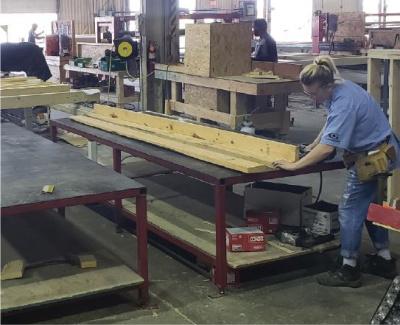
Millard’s production team is less that ten percent women, but three of them have been promoted to lead assemblers in a fairly short time span (see page 25). Mark says that “for the women in the lead roles on the lines, quality has improved; we’re not seeing as many quality issues.” Safety has also “drastically improved on those lines,” according to Mark. Simply put, he says, “They take it seriously.”
Mark also believes hiring more women has been a positive change as it enhances the team’s diversity and creates a more well-blended workforce. “Bringing women into the mix helped others wrap their minds around not judging people based on how they look, their gender, race, ethnicity, etc.,” he explains. “We tend to use temp agencies to help fill positions. It helps when they see that there are women leading crews. It helps the temp agency convince other women to try it.”
The other thing that came through in follow up conversations to the poll results is that it takes a certain type of person – male or female – to be an effective, efficient, reliable production employee. It is interesting to be aware, however, of the different perspective and approach a woman might bring to the table, especially as CMs hire for positions they are otherwise struggling to fill.
Mark sums it up well: “You can’t judge a book by its cover. Anyone can do the job. If women are willing and wanting to apply, then why not? There’s no reason not to give them a chance.”
Spotlight on Sarah Engelhart, Lead Assembler for Millard Lumber
In less than a year, Sarah went from the end of a wall panel line, to lead assembler on the special wall line. “I pushed. What can I do?” she says. “I tried to find out as much as I possibly could. The more I pushed and questioned and did, the more they saw me wanting to move up.”
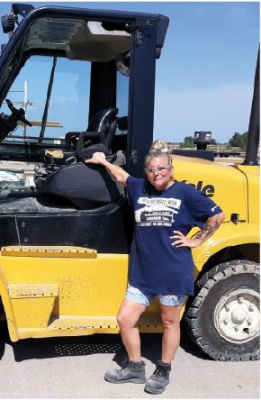
Sarah says she’s always had physical jobs. “My mom was a really hard worker. That’s how I got into it,” she remembers. “My favorite part of this job is that I don’t have to go to the gym after work. I go home tired every day and can just relax.”
While most of the jobs she’s had have been in predominantly male industries, Sarah said this is the first time she didn’t feel uncomfortable when she started. “People were friendly,” she says. “I’m dyslexic, so sometimes I struggle to pick up certain things, but the team here is quick to help each other out.”
Sarah was the only woman in the plant when she started and now there are four. She says she appreciates the balanced workforce. “The more women we get in here, the better it gets,” she says. “I’ve got a friend who’s trying to get in. I told her it’s awesome. My biggest thing is that it’s so physical I get a good workout. This industry keeps you young and healthy.”

